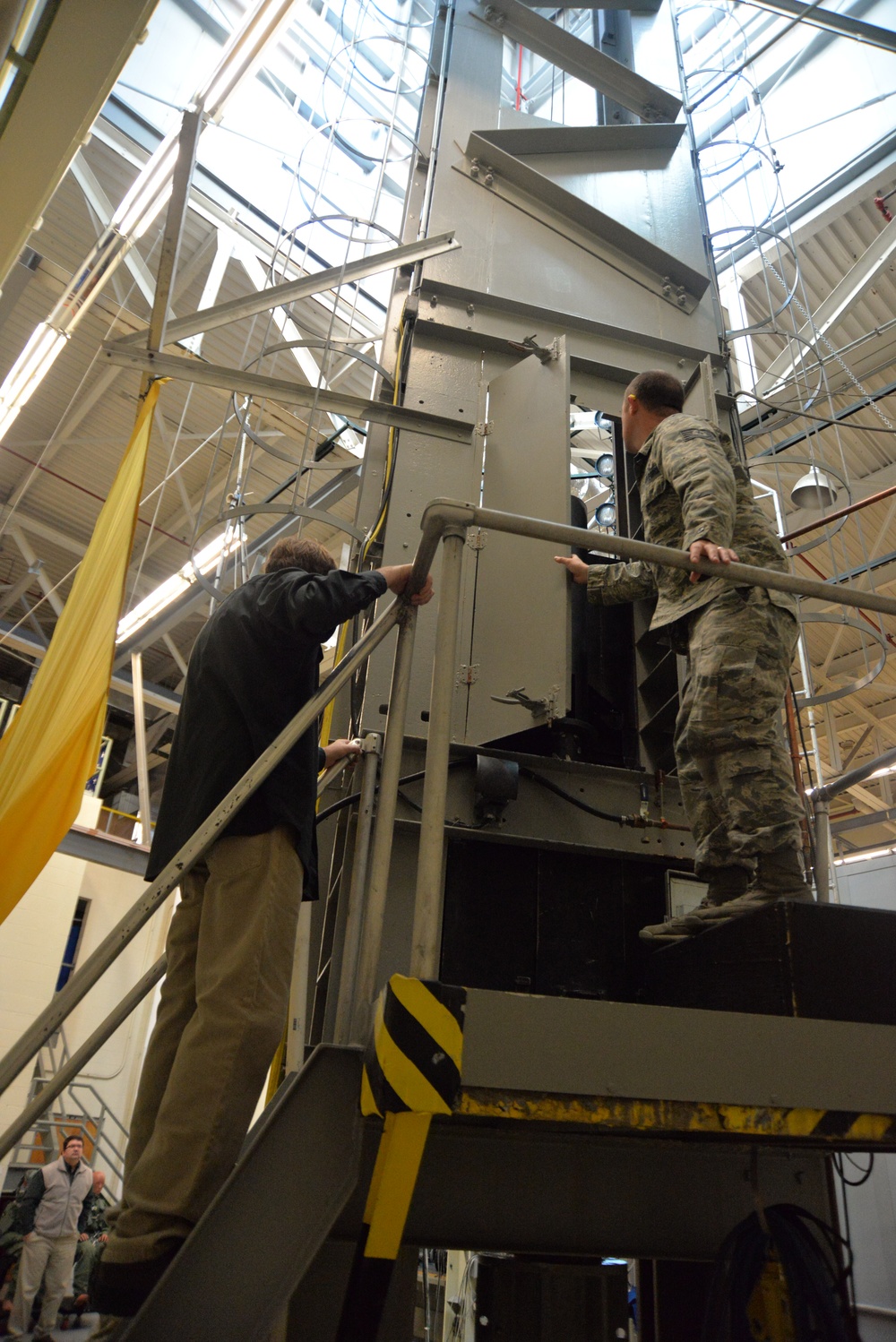
Tech. Sgt. Clifford Hatch, 711th Human Performance Wing aircrew flight equipment specialist, and Brian Grattan, a contractor for 711th Human Performance Wing, ensure that the safety pin installed on the Vertical Deceleration Tower for Human Impact Response has been removed, Nov. 3, 2015, at Wright-Patterson Air Force Base, Ohio. If the pin is not removed the carriage will not drop when signaled from the control station. Personnel in the Applied Neuroscience Branch of the Warfighter Interface Division, Human Effectiveness Directorate, utilize the combination of a Vertical Deceleration Tower for Human Impact Response and a Horizontal Impact Accelerator to reproduce the intensity and duration of G-forces experienced during ejection. The laboratory facility is unique in it is the only one in the world rated safe for conducting impact acceleration tests with humans. (U.S. Air Force photo by Michelle Gigante)
| Date Taken: | 11.02.2015 |
| Date Posted: | 11.17.2015 14:46 |
| Photo ID: | 2291417 |
| VIRIN: | 151104-F-AL359-004 |
| Resolution: | 4016x6016 |
| Size: | 8.09 MB |
| Location: | WRIGHT-PATTERSON AIR FORCE BASE, OHIO, US |
| Web Views: | 62 |
| Downloads: | 3 |

This work, 711 HPW improving ejection seat technology to save lives tomorrow, by Michelle Gigante, identified by DVIDS, must comply with the restrictions shown on https://www.dvidshub.net/about/copyright.